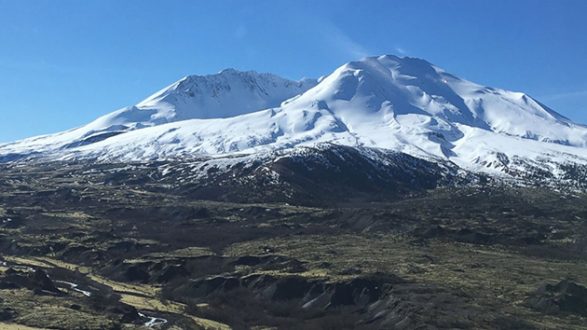
 USGS(NEW YORK) — Mount St. Helens erupted on May 18, 1980 after two months of increasing volcanic activity.
USGS(NEW YORK) — Mount St. Helens erupted on May 18, 1980 after two months of increasing volcanic activity.
That event is widely considered the most disastrous volcanic eruption in U.S. history. It killed 57 people, destroyed hundreds of homes, 57 bridges and some 200 miles of roads and highways, in addition to leveling tens of thousands of acres of forest land.
The eruption sent an ash cloud more than 12 miles into the atmosphere in just 10 minutes. The ash then spread across the continental U.S. in a matter of days and circled the earth within 15 days, according to the U.S. Geological Survey. The volcano had been dormant for more than 100 years until the seismic activity started to increase in March 1980.
A series of earthquakes caused cracks in the snow and ice at the top of the mountain. On March 27, 1980, ash began to spray from the mountain’s peak.
But what happened next caught many scientists by surprise. At 8:32 a.m. on the day of the big eruption, a 5.1-magnitude earthquake shook the area. Instead of the typical eruption, which spews from the mountain’s top, this sent a huge explosion out from the mountain’s side.
Some 3.2 billion tons of ash spewed into the surrounding area, according to the United States Geological Survey. Streets and buildings were covered, and the eruption caused an estimated $1 billion in damage.
Over the nearly four decades since the cataclysmic eruption, the USGS has noticed signs of recovery near Mount St. Helens.
Even though these signs of re-growth are positive, there are also signs of increased seismic activity in the mountain.
“Mount St. Helens is at ‘normal’ background levels of activity,” Liz Westby, a geologist with the U.S. Geological Survey-Cascades Volcano Observatory, told ABC News. “But a bit out of the ordinary are several small magnitude earthquake swarms in March-May 2016, November 2016, and April 16-May 5, 2017. During the April 16-May 5, 2017 swarm, we detected well over 100 earthquakes – all below a magnitude 1.3.”
That size of quakes would be too small for a person to feel on the surface, even if they were standing directly above them, since the earthquakes are happening between sea level and 3 miles below sea level, Westby said.
And even though there is a swarm of earthquakes currently, Westby said that doesn’t mean that an eruption of Mount St. Helens is coming. Volcanic forecasts can be tricky.
“There are several reasons why it is very unlikely that this swarm is a precursor to imminent eruptive activity at Mount St. Helens: It is similar to ones in the past that did not lead to surface activity; it consists of very small earthquakes occurring at relatively low rates; there are no other geophysical indicators (like surface deformation, tilting, increased volcanic gas emissions) of unrest,” Westby told ABC News.
Westby said these swarms are extremely interesting and helpful to scientists, since each geophysical signal gives them a better understanding of how a volcano functions.
“This is why we maintain a close watch over these giants, so we can detect the earliest signs of reawakening,” Westby told ABC News.
The agency sends out weekly updates on seismic activity around the volcano. The last time Mount St. Helens erupted was in 2008, but that volcanic activity did not compare to the cataclysmic eruption in 1980.
Copyright © 2017, ABC Radio. All rights reserved.










